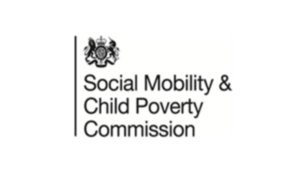New research on improved results for disadvantaged London pupils
The Social Mobility and Child Poverty Commission publishes research on the factors behind improved results for disadvantaged London pupils.

The Social Mobility and Child Poverty Commission today (Monday 23 June 2014) publishes new research by the Institute for Fiscal Studies looking at improved results for disadvantaged pupils in London and the factors behind this achievement.
The research found disadvantaged pupils (defined as those in receipt of free school meals) perform better in inner London than in other regions. They have pulled even further ahead over the last decade, and are now 50% more likely than poor children elsewhere to get 5 GCSEs A* to C. Similar improvements, though slightly smaller and later, can also be seen in Birmingham and Manchester.
The key new finding is that higher levels of achievement at key stage 4 (the end of secondary school) and improvements in results for disadvantaged pupils in London (and other big cities) can mostly be explained by improvements in prior attainment at key stage 2 (the end of primary school). The effect is even more striking for the gap in results for higher-performing GCSE outcomes (such as achieving 8 or more A* to B).
The importance of key stage 2 means that the large improvement of the last decade in GCSE results for free school meals pupils is unlikely to have been driven primarily by secondary schools, as has sometimes been assumed. Instead, the roots of success are likely to lie in primary schools.
It is unclear what caused the improvement in primary test scores that led to the ‘London effect’ and higher achievement at key stage 4. But the answer will lie in changes in primary schools in the late 1990s and early 2000s. This could include the national literacy and numeracy strategies, which were rolled out during this time. London local authorities made up many of the pilot areas. This means initiatives such as the London Challenge, the academies programme and Teach First are unlikely to account for the rapid improvements seen over this period.
Secondaries continue to matter, however. The London effect is sustained into post-16 outcomes, with disadvantaged pupils more likely to continue into key stage 5. This is not true for those disadvantaged pupils who perform well at key stage 4 in Manchester and Birmingham.
The research also shed new light on the role of demographic mix in London and other cities’ success. Inner London and other large cities have higher levels of deprivation and a considerably greater number of pupils from ethnic monitory backgrounds. Some of the higher-level improvement in results over time for disadvantaged pupils in London can be explained by these demographic differences.
Rt. Hon. Alan Milburn, the Chair of the Commission, said:
Successive governments have focused on secondary schools as the key that unlocks better results among the poorest pupils. This research shows that the key may actually lie in primary schools.
Contrary to received wisdom, this research suggests that the London GCSE miracle for disadvantaged children is more likely to have been driven by policies such as the literacy and numeracy strategies than by later initiatives like the London Challenge.
The implication is that policymakers should renew their focus on ensuring younger children excel before they make the transition to secondary education
This research also challenges those who say poor children do better in London primarily because of ethnic mix. In fact demographics explain just a fifth of better results in 2012 whereas better primary attainment explain half of it with the remaining 30% or so due to better secondary schools.